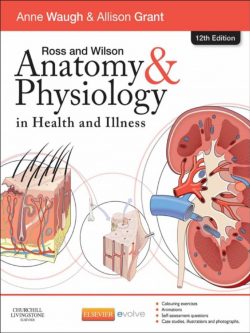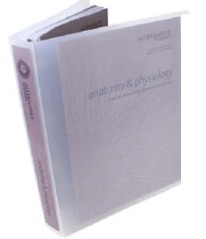Anatomy & Physiology Course Content Each Unit has many “Activities” which incorporate a range of study skills including reading, writing, copying, drawing, reciting, researching and repertorising. The range of learning experiences and the different material (course, movies, audio and books) makes the course enjoyable and therefore, memorable!
PURCHASE THE ANATOMY & PHYSIOLOGY COURSE HERE, Select Anatomy & Physiology Course for Natural Health: https://www.schoolofhealth.com/medical-sciences/anatomy-and-physiology-course/
Audio & Movie lectures
Movie Lectures Unit 1: Skin (61 mins) Unit 2: Skeleton (40 mins) Unit 3: Heart (46 mins) Unit 4: Resistance (66 mins) Unit 5: Liver (39 mins) Unit 6: Female (42 mins) Total = 4 hours 54 mins Audio Lectures Unit 1: The Cell (7 mins) Unit 2: Muscles (6 mins) Unit 3: Respiratory System (12 mins) Unit 4: Urinary System (7 mins) Unit 5: Endocrine System (10 mins) Unit 6: Reproductive System (6 mins) Total = 48 mins
Full contents with learning outcomes:
Welcome
Introduction to anatomy & physiology How to follow this course Course structure Course textbooks Internet resources Assignment questions Marking Grading Study time & re-enrolment fee Environment Refund of course fee
Unit one
Introduction The cell Learning outcomes Cell structure and function Other membranes Maintaining healthy membranes The importance of knowing cell types The skin Learning outcomes Structure of the skin Skin pathology Digestive system Learning outcomes Structure of the alimentary canal Position of the organs in the abdomen How digestion works Summary
Unit two
Introduction Skeleton Learning outcomes Anatomical position Bones Components of bones Influence of hormones Fracture repair Body language of posture Joints Learning outcomes Joints and body language Muscles Learning outcomes The three types of muscle tissue Function and action of skeletal muscles Nerves Learning outcomes Distinguishing the parts of the nervous system Components of the nervous system Musculo-skeletal nutrition Learning outcomes Balanced diet and its ideal proportions Calculating body-mass index The healthy musculo-skeletal system Summary
Unit three
Introduction Respiratory system Learning outcomes Gaseous exchange Components of the respiratory system Mechanism of breathing Cardiovascular system Learning outcomes Anatomy of the heart Circulatory system Cardiac cycle Heart language Summary
Unit four
Introduction Blood Learning outcomes Blood is a connective tissue Composition of blood Cellular content of blood Resistance and immunity Learning outcomes Non-specific defence mechanisms Inflammatory response Lymph and lymphatic system Immunity Importance of memory cells Acquired immunity Vaccination issues Excretory system Learning outcomes Necessity for excretion Repertory exercise Components of the urinary system Summary
Unit five
Introduction The Liver Learning outcomes Structure of the liver Function of the liver The Endocrine System Learning outcomes The components of the endocrine system The target organs The Brain and Nervous System Learning outcomes The brain Parts of the brain The blood –brain barrier (BBB) The structure of the spinal cord Summary
Unit six
Introduction Male reproductive system Learning outcomes Puberty The parts Female reproductive system Learning outcomes Puberty The parts Menstrual cycle The Special Senses Summary
Key Learning Outcomes
At the end of this course you will be able to:
- Understand the structure and function of cells.
- Understand the structure and function of the skin and disease states of the skin.
- Understand the structure and function of the digestive system.
- Understand the structure and function of the musculo-skeletal system.
- Understand the components of a healthy diet.
- Understand the structure and function of the respiratory system.
- Understand the structure and function of the cardiovascular system.
- Understand the mechanisms of resistance and immunity.
- Understand the structure and function of the excretory system.
- Understand the structure and function of the endocrine system.
- Understand the structure and function of the nervous system.
- Understand the structure and function of the reproductive system.
- Understand the structure and function of the special senses.



Anatomy & Physiology Course Certificate

The Anatomy & Physiology Course Diploma
Rigorous external assessment is provided through completion of the comprehensive assignments sets, with high standards of tutor marking. The course certification is equivalent to a UK vocational ‘A’ level or NVQ Level 3 and will provide you with a solid foundation should you wish to undertake further study. The course certification is widely accepted, recommended and used by many schools, colleges and individuals as part of their integrated training programmes. If you have further education in mind we recommend that you check with your college to make sure our course is recognised for the necessary high standards. We are happy to help in this respect. There are 6 – 8 tutor assessed activities at the end of each unit that you send to your tutor by post or e-mail along with the non-tutor assessed activities. The assessed activities are marked and returned to you. To complete this distance learning course, you have to attain a passing grade in each of the activities. You will then be awarded The School of Health’s Certificate in Anatomy & Physiology for Homeopaths. Please note: you will only be assigned a tutor, be able to send work for assessment and receive a certificate on completion of the course if you purchase it with tutor marking. If you purchase the course without tutor marking, it is possible to upgrade it to include the services of a tutor later. By purchasing a distance-learning course from The School of Health you are assured of receiving a high quality of product, service and care. We are registered members of the Complementary Medical Association (CMA), who are recognised by the public and doctors alike as the leading organisation in the field of ethical, professional complementary medicine. The CMA is totally dedicated to representing ‘the professional face of complementary medicine’ and promoting research, education and knowledge in the field.
- The Association of the British Correspondence College (ABCC)
- The British Holistic Medical Association (BHMA)
- The Complementary Medical Association (CMA)
- The Society of Homeopaths (SoH)
